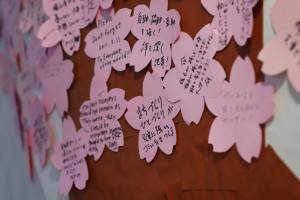| Name | Japan CSO Coalition for Disaster Risk Reduction (JCC-DRR) |
|---|---|
| Chairperson | OHASHI, Masaaki (Adviser, Japan NGO Center for International Cooperation – JANIC) |
| Office Address | Japan NGO Center for International Cooperation (JANIC) C/O mingle, 4/F Nishiyama Building,4-7-1 Shiba, Minato-ku, Tokyo 108-0014, Japan |
| TEL | +81-3-6435-2945 (JANIC: Horiuchi) |
| secretariat[@]jcc-drr.net | |
| Members |
|
| Members | 55 Organizations → Member List |
Introduction
 Japan has learnt many important lessons from disasters, especially the East Japan Earthquake and Tsunami in 2011. A key message is the need for reducing disaster risks during non-disaster times and ensuring that emergency response processes are well thought out before disaster strikes. The result of such reflection led to civil society’s movement to establish the Japan CSO Coalition for 2015WCDRR (JCC2015) – a coalition of more than 100 Japanese agencies who advocated together for reflecting lessons learnt from Japan towards the Sendai Framework on Disaster Risk Reduction (SFDRR).
Japan has learnt many important lessons from disasters, especially the East Japan Earthquake and Tsunami in 2011. A key message is the need for reducing disaster risks during non-disaster times and ensuring that emergency response processes are well thought out before disaster strikes. The result of such reflection led to civil society’s movement to establish the Japan CSO Coalition for 2015WCDRR (JCC2015) – a coalition of more than 100 Japanese agencies who advocated together for reflecting lessons learnt from Japan towards the Sendai Framework on Disaster Risk Reduction (SFDRR).
Now after the 2015 WCCRR, JCC2015 will be re-named and re-configured as the Japan CSO Coalition on DRR (JCC-DRR) to monitor the implementation of the SFDRR and to promote disaster risk reduction for future disasters.
JCC-DRR activities
- Monitoring of the SFDRR: JCCDRR becomes the focal network on monitoring of implementation of the SFDRR, and constructive discussion platform is created with Japanese government (Cabinet office) on SFDRR implementation in Japan.
- Mainstreaming of DRR: On some key thematic areas (e.g. gender, children and youths, disability, etc.), initiatives that mainstream DRR into relevant sectors are conducted, which contribute to the enhancement of the DRR capacity in Japan as a whole.
- Advocacy: JCCDRR’s global advocacy on lessons learnt from Japan leads to concrete implementation of risk reduction measures regionally and globally based on the SFDRRR, including risk reduction on nuclear power plants. Also, lessons learnt from Japan as well as progress on the implementation of the SFDRR in Japan are captured in key DRR forums and documents.
2015 is a significant year for the DRR dialogue and learning with the review of the Hyogo Framework for Action (HFA) and launch of the Sendai Framework for DRR (SFDRR) during the Third UN World Conference on DRR (WCDRR). 2015 is also significant with the launch of the Sustainable Development Goals (SDGs) and the 21st Session of the Conference of the Parties to the United Nations
Framework Convention on Climate Change (COP21/CMP11). JCCDRR joins many civil society and community groups in believing that these three frameworks are linked and require a comprehensive perspective that covers the DRR, development and environmental frameworks.
JCC-DRR in Nuclear Risks
Despite that over four years have passed since the East Japan Earthquake and Tsunami in 2011, there are still 212,000 evacuees scattered across 1,151 municipalities in 47 prefectures (data from May 2015 from Reconstruction Agency) across Japan who are still struggling to find their way to recovery. The earthquake, tsunami, and nuclear power plant accident which caused 15,892 deaths and 2,576 missing persons also caused more than 3,000 disaster related deaths (deaths that are linked to stress of long term evacuation). For these affected communities, full recovery is still far away.
While Japan is known to be one of the world’s most prepared countries to respond to natural disasters, the disaster in 2011 has left many ’unprecedented’ events which we all can learn from. One such examples was the accident at Fukushima Daiichi Nuclear Power Plant, which still leaks radiation to its surroundings. Therefore, in line with the engagement of customary disaster risk reduction (DRR) programs, JCC-DRR and its partners have been focusing on advocacy and preparedness work to improve the nations’ resilience to nuclear disaster. As there is a risk that a similar event will happen in the future somewhere in the world, JCC-DRR also focuses on the mainstreaming of nuclear risk in DRR in the regional and global level.












